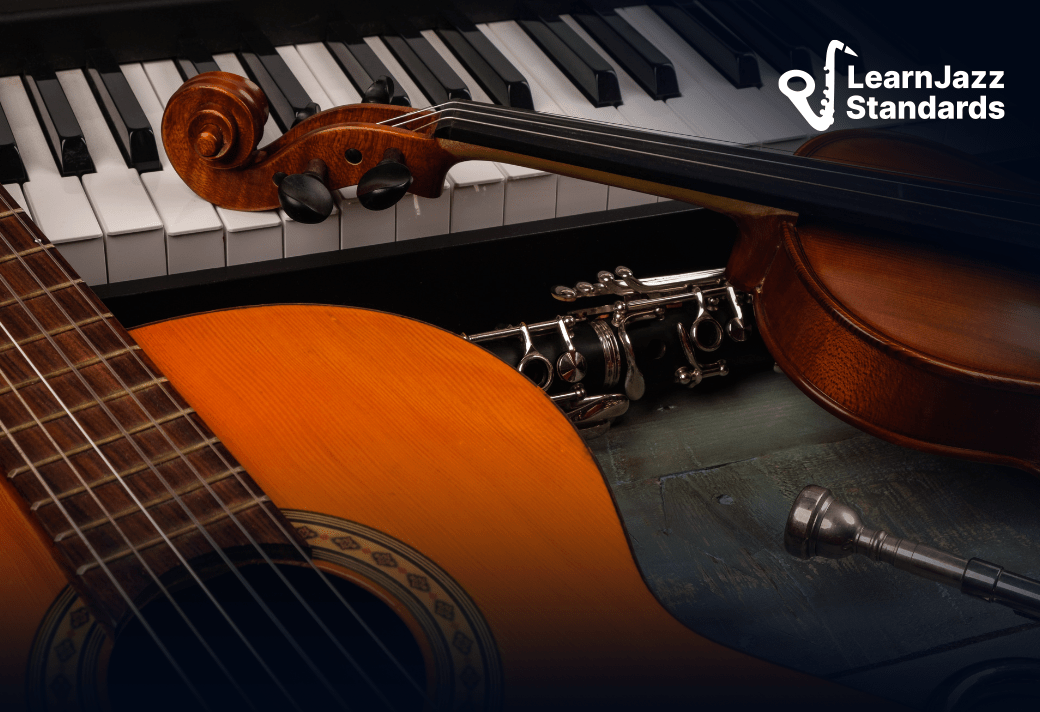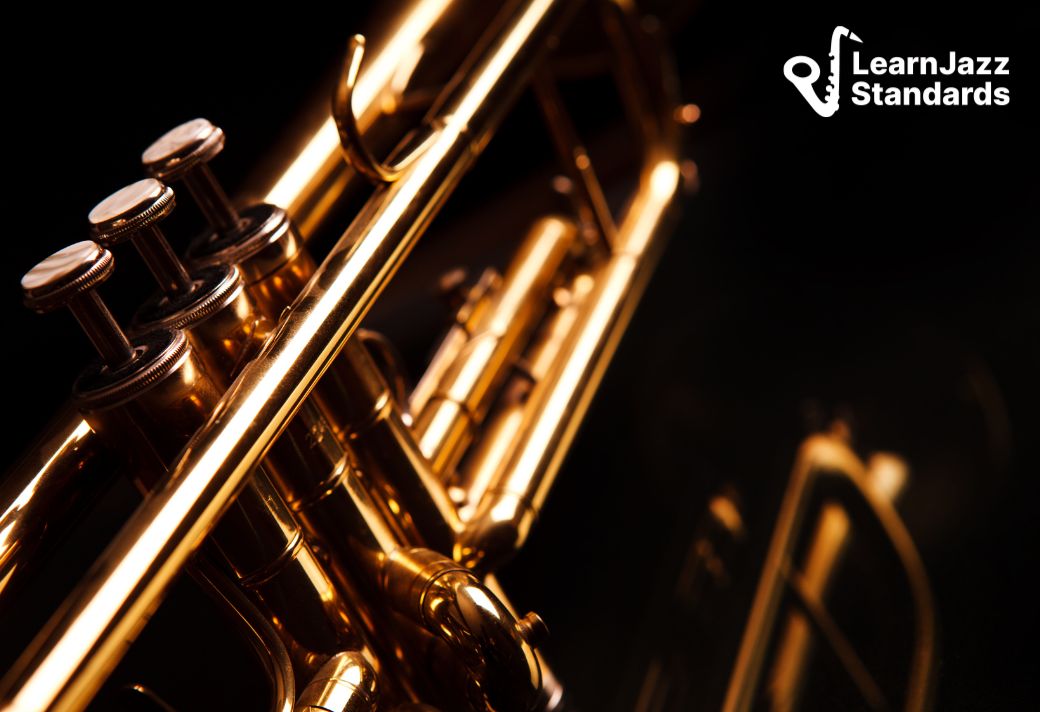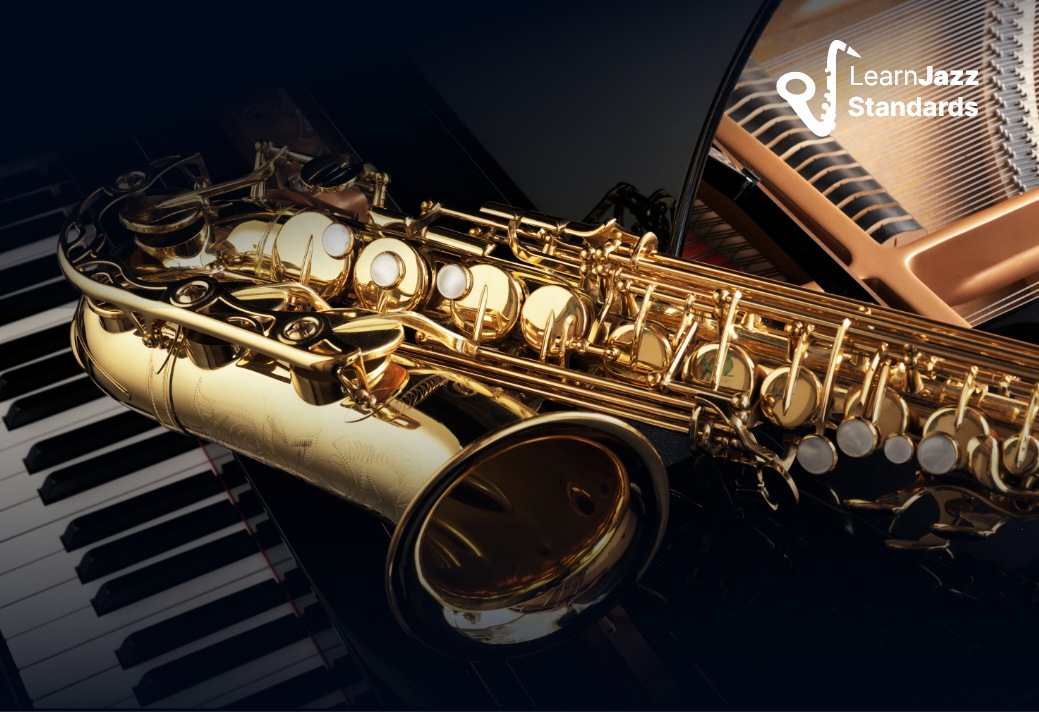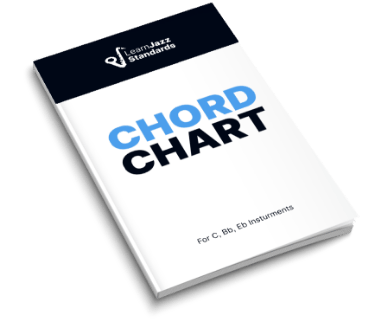Stuck on 7th chords?
We’ll teach you everything you need to know about seventh chords, including:
- The 7th chord formula
- The basic types of seventh chords most commonly found in jazz
- Less common 7th chords and how to use them
- Plus, we’ll provide some essential listening recommendations along the way!
Also, we’ll provide basic chord charts for piano and guitar so as not to leave any chord player out! This ultimate guide to 7th chords will give you everything you need to know to understand 7th chords in theory and on the gig.
If you want to learn how to play 7th chords like a pro and become the best jazz musician you can be, then you should check out the Learn Jazz Standards Inner Circle.
Improve in 30 Days or Less. Join the Inner Circle.
Table of Contents
7th Chords In Music
Though present in pop music today and certainly present in jazz, it took the musical world a bit of time to warm up to the sound of 7th chords.
If you look hard enough, you can find examples of incidental 7th chords as far back as Renaissance music, but they were pretty uncommon up until a century and a half ago.
Today, 7th chords are the basic building blocks of jazz harmony and are regularly found in modern music.
To speak the language of jazz and perform jazz with other musicians, you’ll need to understand how 7th chords work, how you can play them (or over them), and how to comprehend them on a chord chart. We’ll first go over 7th chord fundamentals and then move on to more complex 7th chords.
Use the Table of Contents to skip to later sections if you don’t need a 7th chord review!
7th Chords In Music
Though present in pop music today and certainly present in jazz, it took the musical world a bit of time to warm up to the sound of 7th chords.
If you look hard enough, you can find examples of incidental 7th chords as far back as Renaissance music, but they were uncommon until a century and a half ago.
Today, 7th chords are the basic building blocks of jazz harmony and are also found in modern music.
To speak the jazz language and perform with other musicians, you’ll need to understand how 7th chords work, how to play them (or improvise over them), and how to understand them on chord charts. We’ll review 7th chord fundamentals and then move on to more complex 7th chords.
Use the Table of Contents to skip to later sections if you don’t need a 7th chord lesson review!
Understanding the 7th Chord Formula: Triad + the Seventh Scale Degree
Let’s start with the basics—understanding the 7th chord formula.
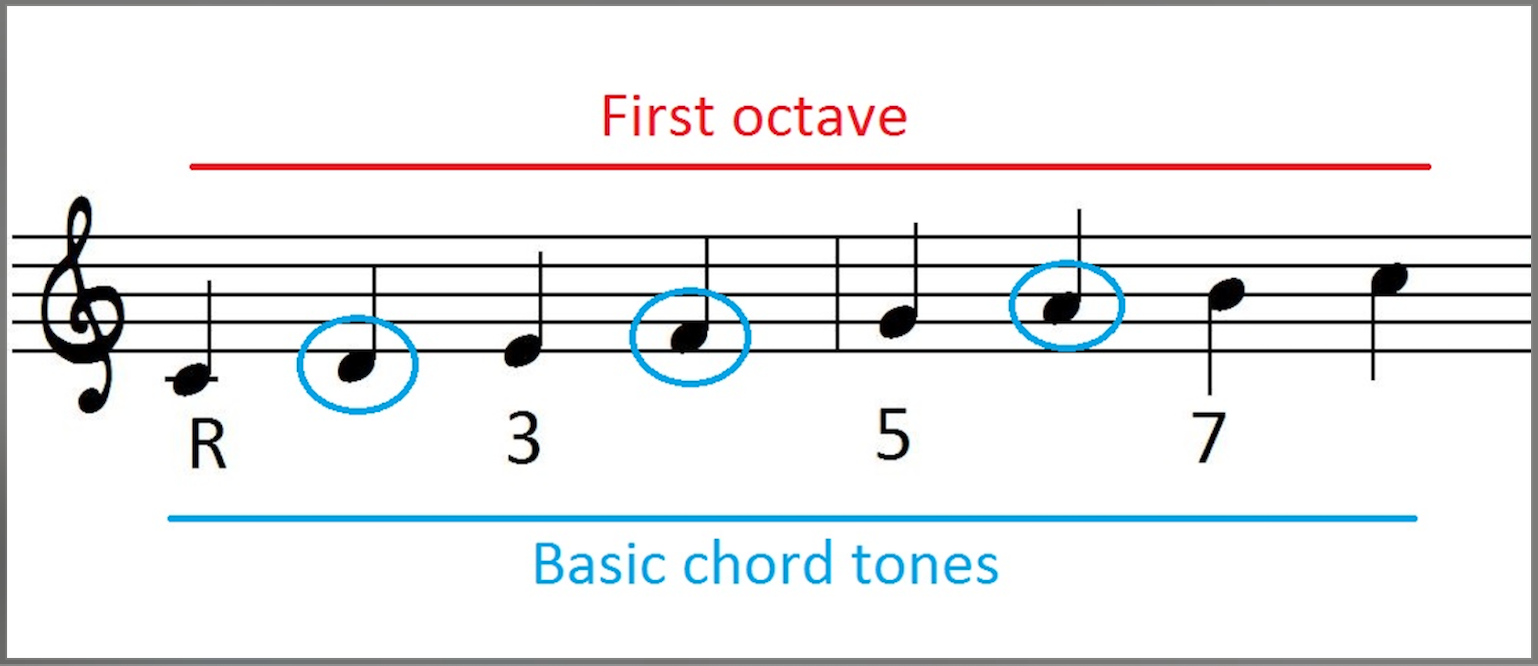
Major, minor, and diminished triads are the basic harmonic building blocks in Western music. You build a triad by selecting a note from a particular scale and stacking thirds on it using its scale degrees.
Using the C major scale as an example, a C major triad would be spelled C-E-G:
- C-D-E-F-G-A-B-C
Though 7th chords have their place in popular music today, most popular music still uses basic triads.
Seventh chords are built on the same principle. However, the difference between triads and 7th chords is that 7th chords add an additional note to the mix—we stack another third on top of the fifth note. This gives us four notes instead of three.
In the case of a C triad, we add one more 3rd to the sequence to get a Cmaj7 chord:
- C-D-E-F-G-A-B-C

You can think of the 7th chord formula as [R + 3 + 5 + 7] or [C + E + G + B].
That’s it! Seventh chords are four-note chords consisting of a root, a 3rd, a 5th, and a 7th. They share the same notes as their triad counterparts but add an additional piece of harmonic information.
Here is a diagram showing the C major scale and the Cmaj7 chord you can build by playing the Rt. 3rd, 5th, and 7th:

We’ll use this formula to build all five basic types of 7th chords in jazz harmony. We’ll start with basic triads—like [C-E-G]—and add the appropriate type of note to arrive at our 7th chord: [C-E-G-B].
If you want more on jazz guitar chords, including more voicings and chord inversions, check out these 20 jazz guitar chords you need to know! For pianists, check out our 15 must-know jazz piano chords.
What Are The Five Types of Seventh Chords Found In Jazz Harmony?
A chord’s quality is determined by its component intervals’ relationship to the chord’s root. (By component intervals, I mean the different relationships between each note in the chord and the chord’s root note.)
For example, if C is your root and you have an Eb and a G, the resulting quality of the triad is minor. It’s a C minor triad, and here are its component intervals:
- Root (C) or (1)
- Minor 3rd (Eb) or (b3)
- Perfect 5th (G) or (5)
This principle applies to seventh chords as well. The component intervals of a seventh chord determine the quality of the 7th chord—or what kind of 7th chord it is.
First, we’ll look at the five types of 7th chords—
- The Major Seventh Chords (ex. Cmaj7)
- The Dominant Seventh Chords (ex. C7)
- The Minor Seventh Chords (ex. C-7)
- The Half-Diminished Seventh Chords (ex. C-7b5)
- The Fully-Diminished Seventh Chords (ex. Cdim7)
The Major Seventh Chord (and Major 6th Chord)
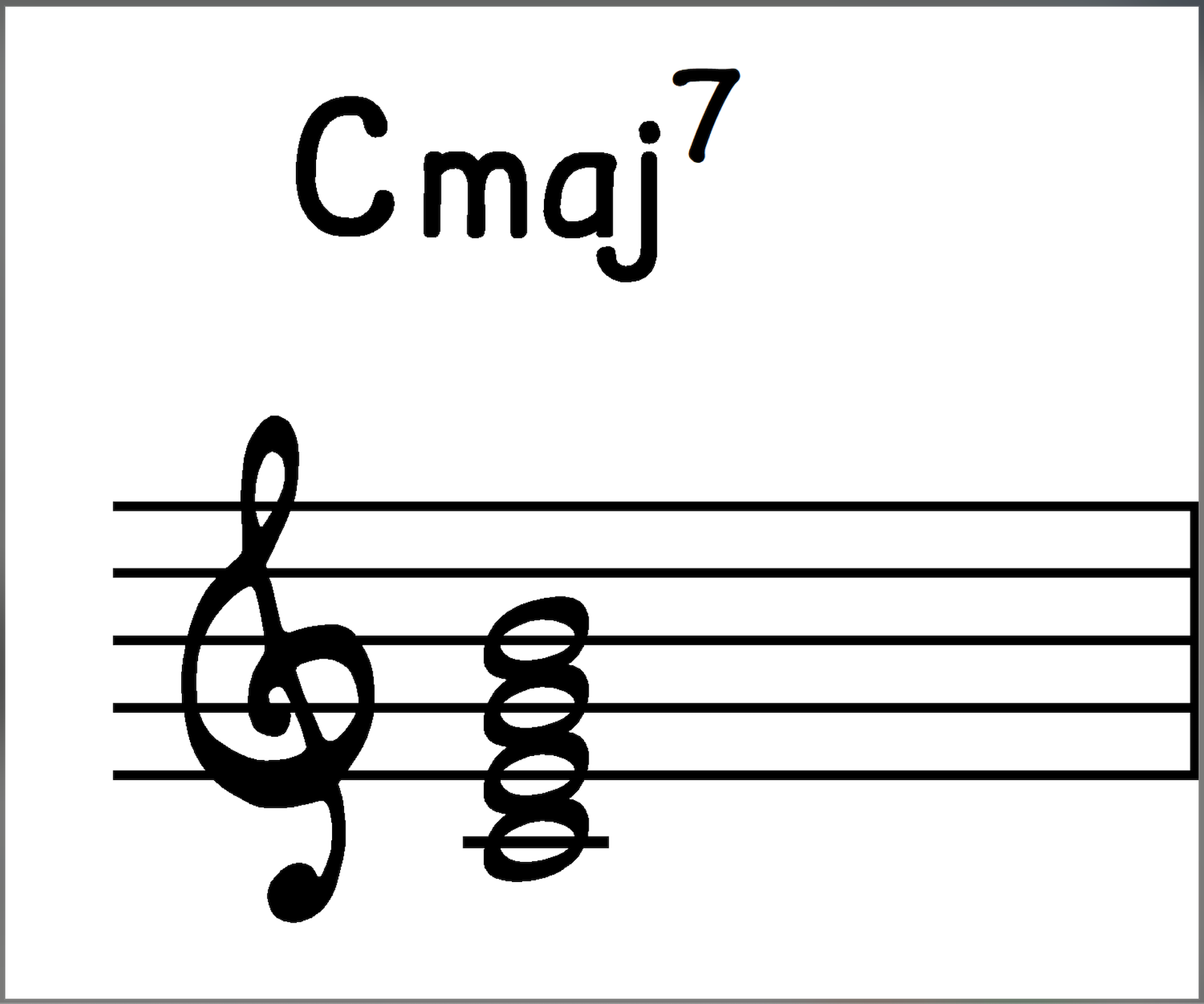
We’ve already introduced the C major seventh chord above. The major seventh chord diatonically functions as the (I) or the (IV) chord in the key of C major. Add a major 7th to the basic three-note C major chord to get a C major 7th chord.
- Root (C) or (1)
- Major 3rd (E) or (3)
- Perfect 5th (G) or (5)
- Major 7th (B) or (7)
Here is this root position Major 7th Chord on Piano:

Here is this root position Major 7th Chord on Guitar:
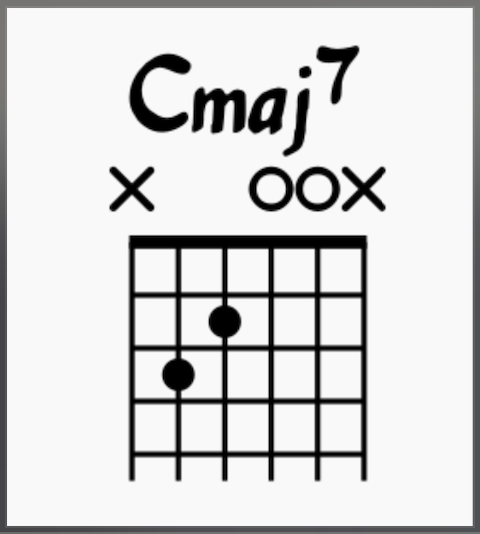
The Major 6 Chord
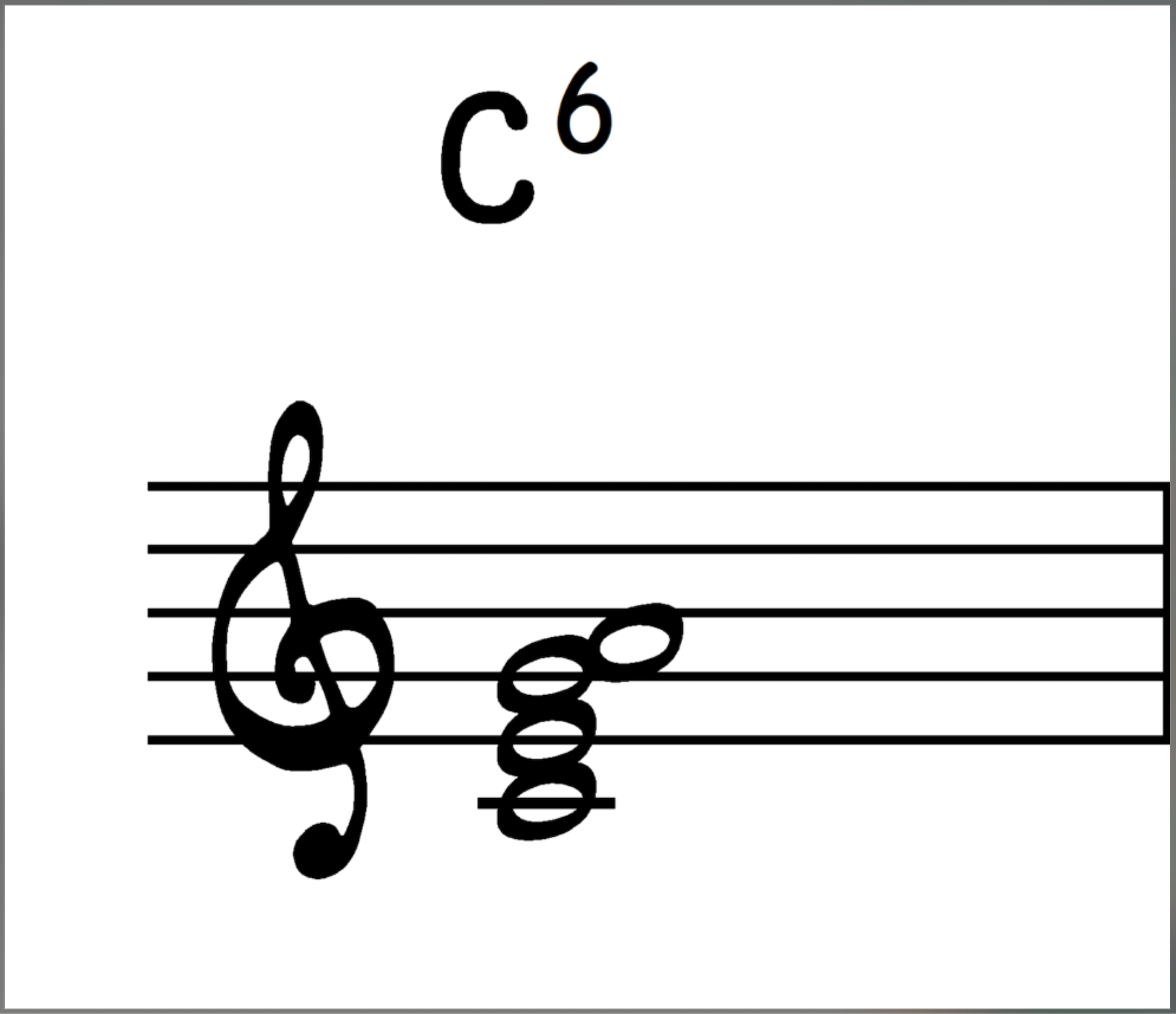
Major 6th chords were used much more frequently in earlier styles of jazz. Think of the classic jazz standard All of Me by Gerard Marks and Seymour Simon. Instead of starting on a major triad or a maj7 chord, the song begins on a maj6 chord. It functions as a tonic chord or a (I) chord.
To build it, you take a major triad and add a major 6th from the root or a major 2nd from the 5th:
- Root (C) or (1)
- Major 3rd (E) or (3)
- Perfect 5th (G) or (5)
- Major 6th (A) or (6)
Strict practitioners of music theory might argue that this shouldn’t have a category of its own because it’s technically a minor 7th chord in first inversion, but this is jazz. We have artistic license to bend and adapt the rules at our convenience!
It’s worth including it here because you’ll definitely encounter it if you haven’t already.
Here is a Cmaj6 voicing on guitar:
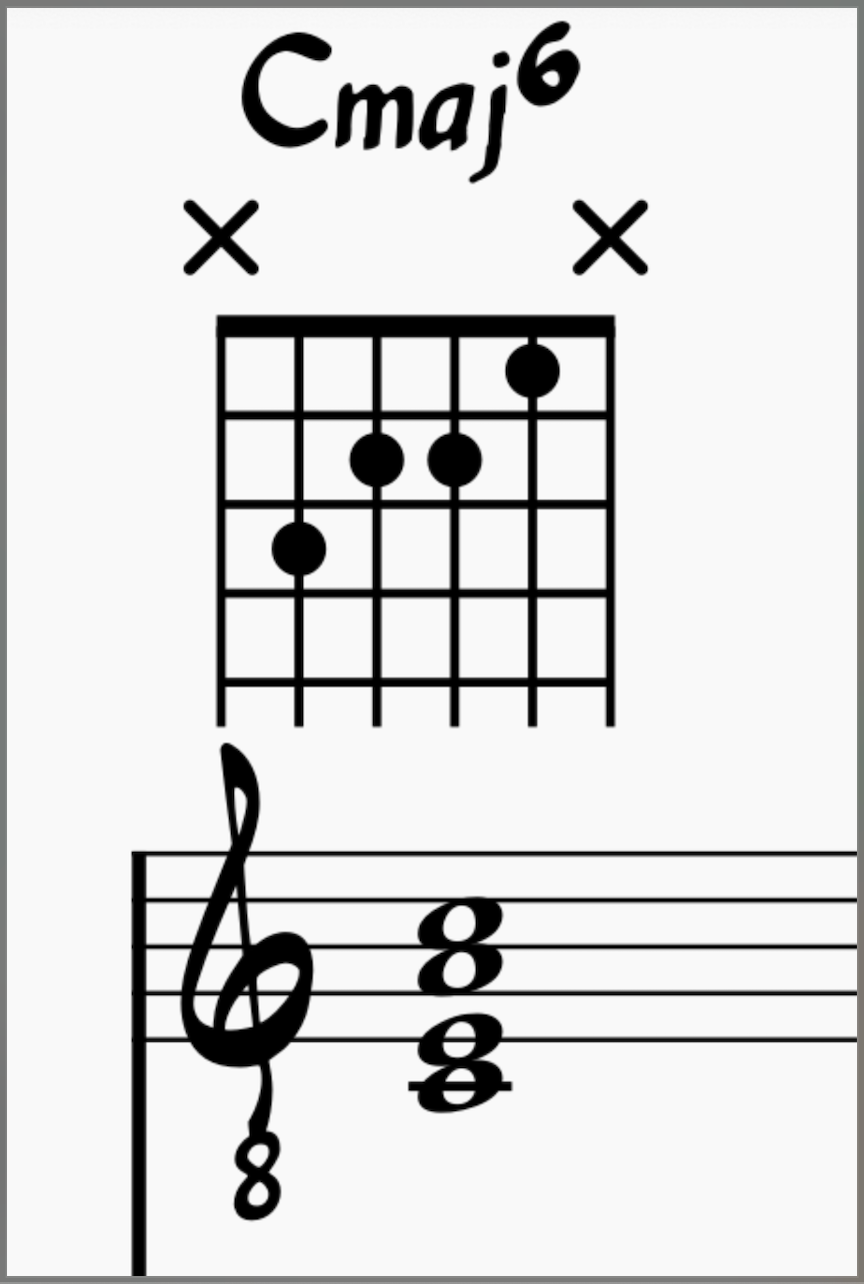
Because of the nature of the guitar, it’s sometimes impossible to get close root position voicings. Notice here we have to omit the G to put the A in this 7th chord. I reflected this change in the staff notation. Seventh chords built on guitar sometimes are not playable in close root position.
Here is this 7th chord on piano:

Major Seventh Chord Symbols
- CM6
- CM7
- CM9
- Cmaj7
- C△7
The Dominant Seventh Chord
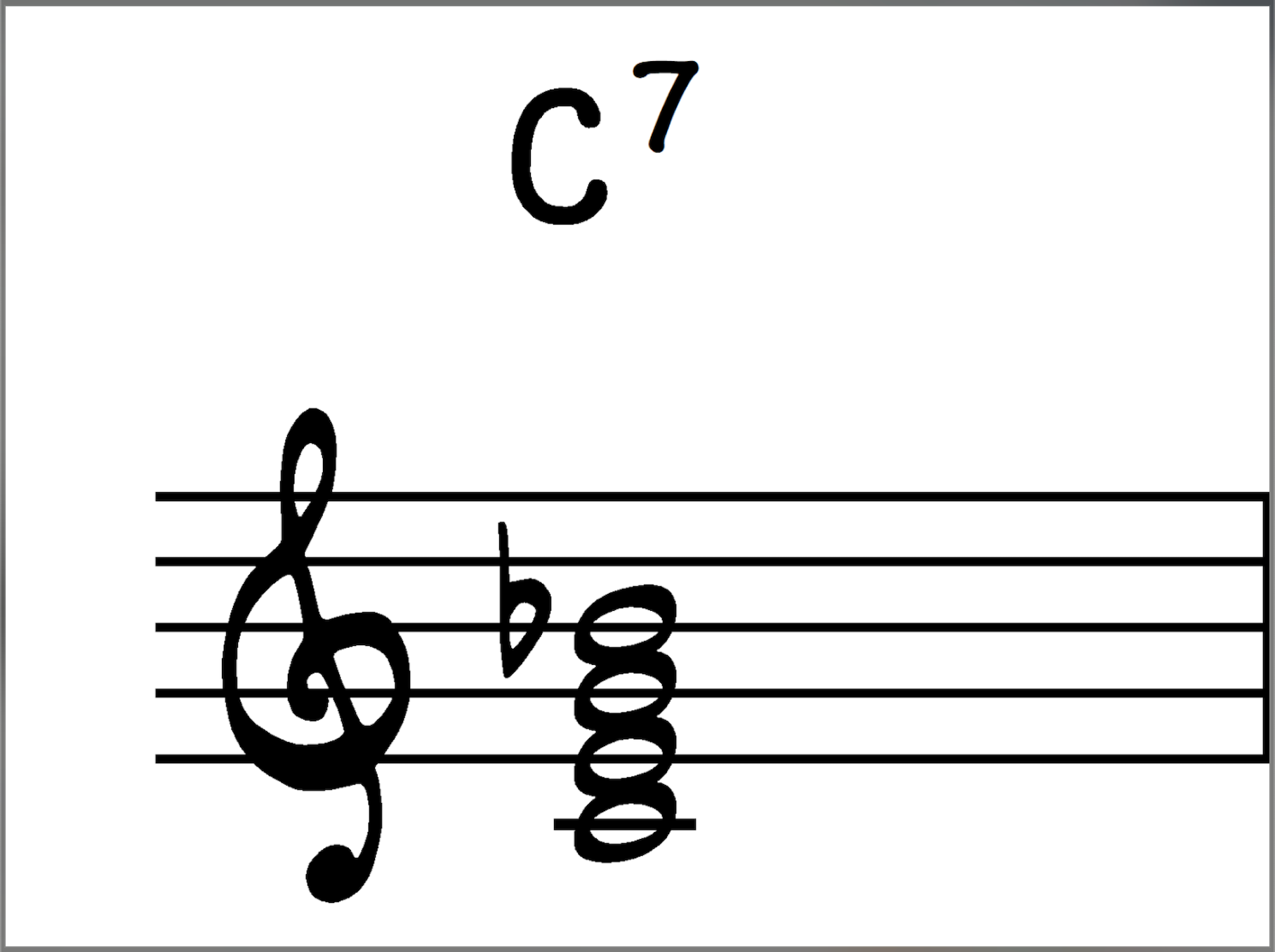
The dominant seventh chord is widely used in jazz. Diatonically, it functions as the (V) chord in major keys, but you’ll find dominant seventh chords all over jazz—especially in the blues.
You build a basic dominant seventh chord by taking a major triad and adding an extra note: the minor seventh from the root or a minor 3rd from the 5th—
- Root (C) or (1)
- Major 3rd (E) or (3)
- Perfect 5th (G) or (5)
- Minor 7th (Bb) or (b7)
Usually, it’s used as a secondary dominant to lead to other diatonic chords in major and minor keys. It’s also used to change keys in jazz chord progressions. The basic jazz blues is made entirely of dominant chords.
Check out our blog post on 4 blues progressions you need to know.
A few examples of these secondary dominants include—
- the dominant (II7) chord (Bb7) in Donna Lee
- the dominant (VI7) chord (F7) used in Donna Lee
- the dominant (I7) chord (Ab7) used in Donna Lee to take us to the (IV) chord
- the dominant (III7) chord (E7) used in All of Me, to use an example from above
Here is a C7 chord voicing on Guitar:
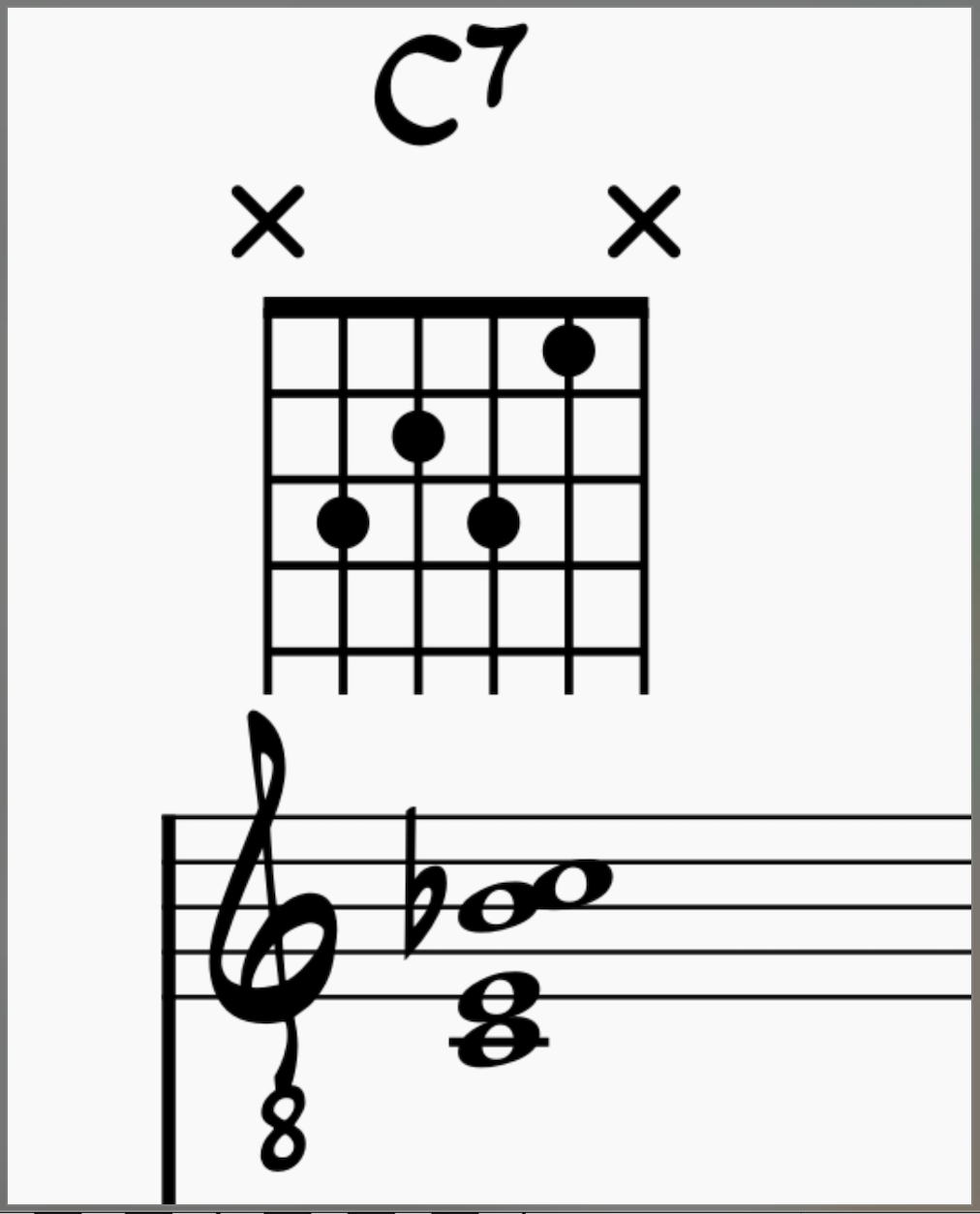
Notice again how we have to change the notation on the staff to make this seventh chord possible on the guitar. (It will be a running theme with seventh chords built on guitar.)
Here is a close root position C7 voicing on Piano:

Check out our podcast episode on understanding secondary and backdoor dominant chords to learn more about how these dominant 7th chords work.
BEFORE YOU CONTINUE...
If music theory has always seemed confusing to you and you wish someone would make it feel simple, our free guide will help you unlock jazz theory secrets.

The Minor Seventh Chord

In a major key, the minor seventh chord functions as the (ii7), the (iii7), and the (vi7) chords.
There are also entire modal tunes composed using only minor seventh chords. Maybe the most famous example is John Coltrane’s Impressions, but there are many more examples of tunes written exclusively with minor seventh chords.
Here are four more modal tunes you should add to your repertoire.
You build a minor seventh chord by taking a minor triad and adding a minor seventh interval from the root or a minor third interval from the 5th.
- Root (C) or (1)
- Minor Third (Eb) or (b3)
- Perfect Fifth (G) or (5)
- Minor Seventh (Bb) or (b7)
Here is a C-7 Chord on Guitar:
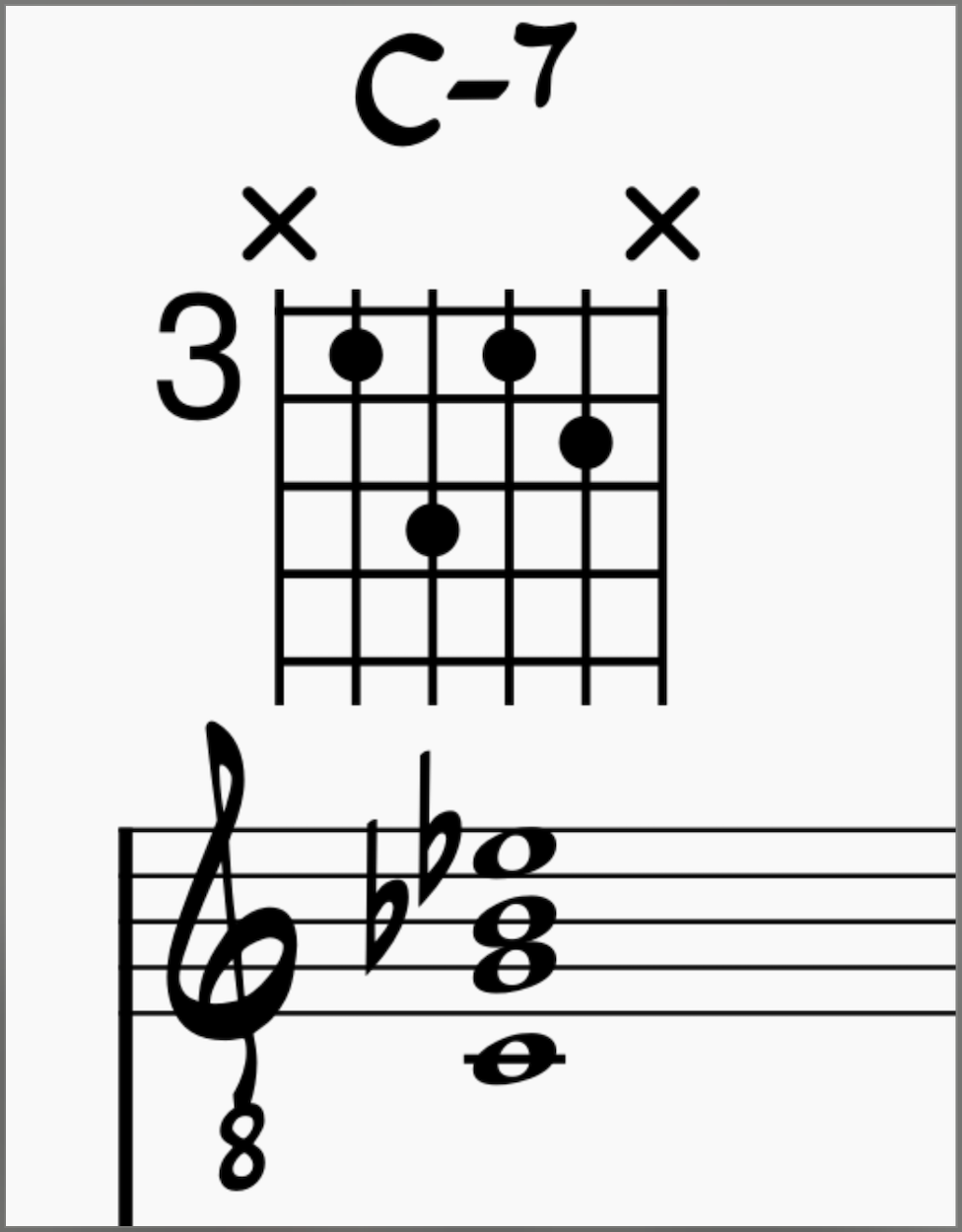
Here is a close root position C-7 chord on the Piano:

The Minor 6 Chord
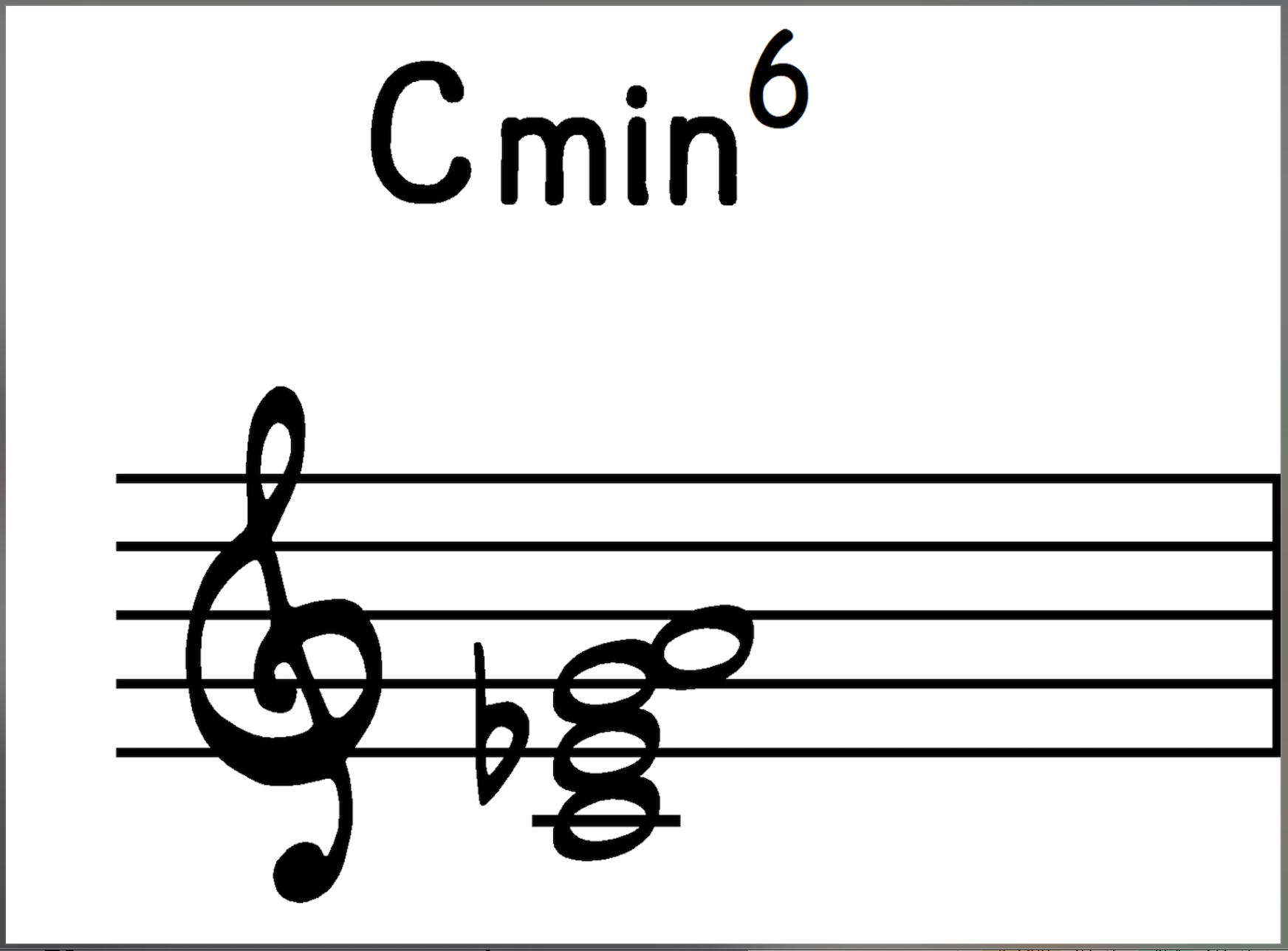
Yes, it’s also an A-7(b5) in first inversion, but the minor 6 chord deserves to have its own dedicated section.
- Root (C) or (1)
- Minor 3rd (Eb) or (b3)
- Perfect 5th (G) or (5)
- Major 6th (A) or (6)
This chord is the backbone of many amazing jazz tunes that use minor keys.
- Round Midnight by Thelonius Monk
- Summertime by George Gershwin
- Minority by Gigi Gryce
- Alone Together by Arthur Schwartz
Here is a C-6 chord voicing on Guitar:
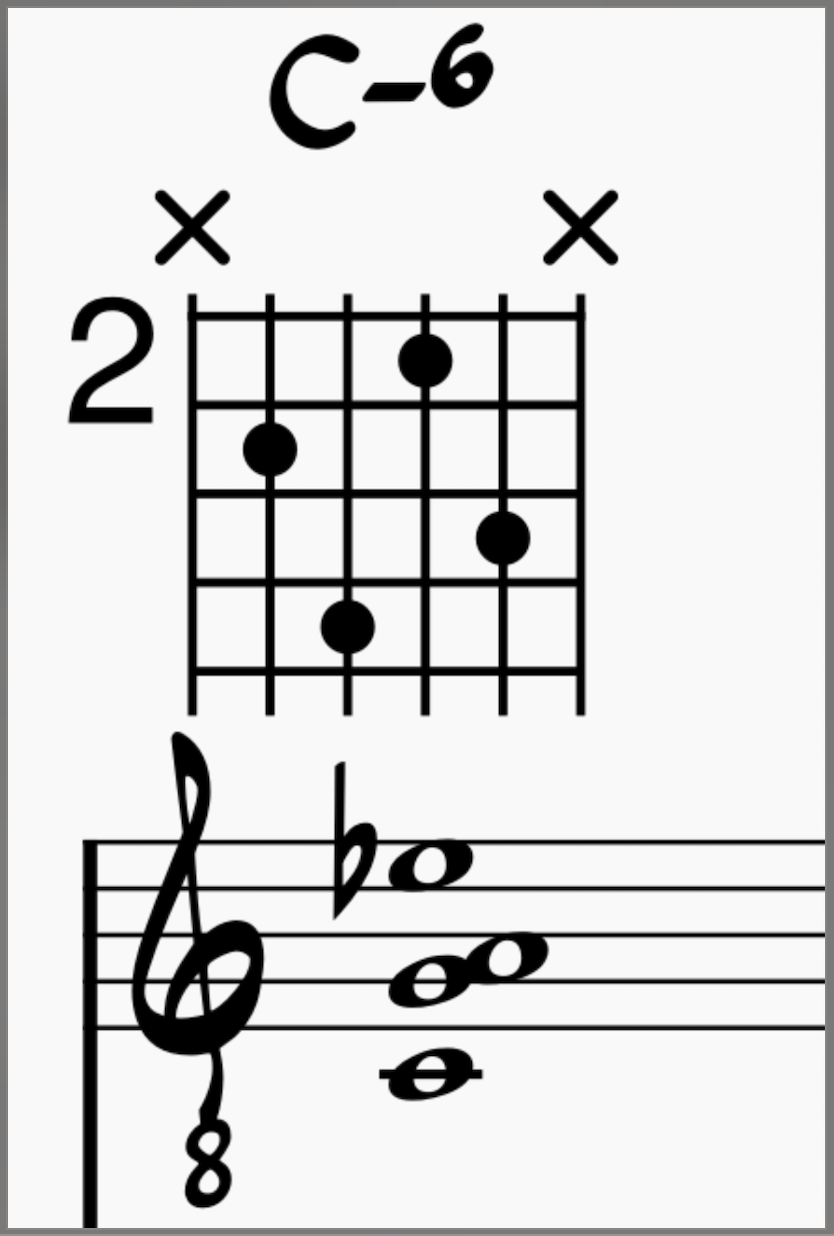
Here is a close root position C-6 chord on the Piano:

Minor Seventh Chord Symbols:
- Cm6
- Cm7
- Cm9
- Cmin7
- C-7
The Half-Diminished Seventh Chord
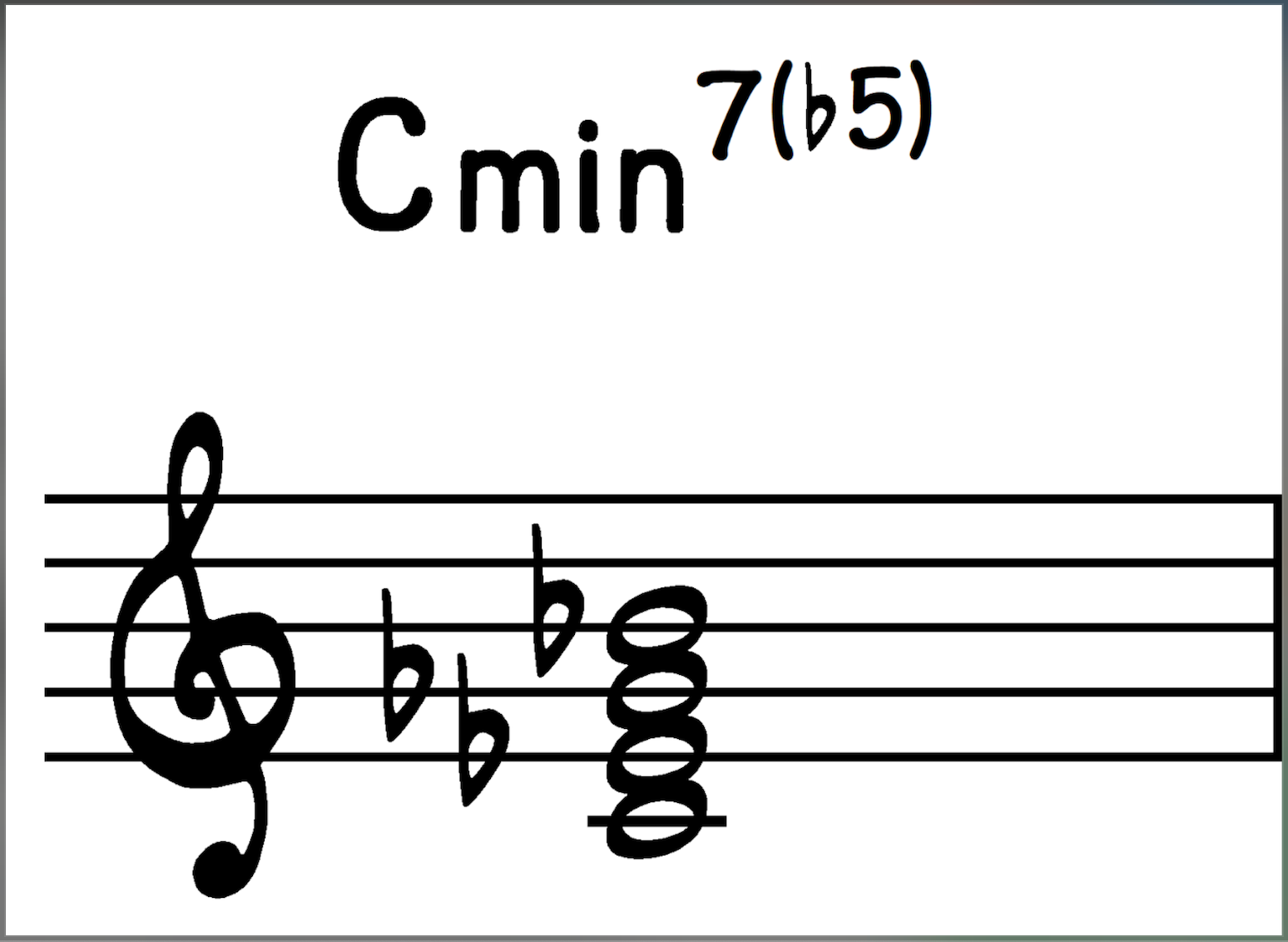
The minor 7(b5) chord, or half-diminished seventh chord, functions as the (viiø7) chord in major keys and is often used as the (iiø7) chord in a minor [iiø7 – V7 – i-7] progression. Because of the b5, it has more tension than regular minor seventh chords.
Half-diminished seventh chords work nicely because the b5 of the ii chord becomes a b9 on the (V7) chord before resolving to the 5th of the (i-7).
You build a half-diminished seventh chord by taking a diminished triad and stacking a minor seventh interval from the root or a major 3rd interval from the (b5).
- Root (C) or (1)
- Minor 3rd (Eb) or (b3)
- Diminished 5th (Gb) or (b5)
- Minor 7th (Bb)
Here is a voicing for C-7b5 or C half-diminished chord on Guitar:

Here is a C-7b5 chord on Piano:

Half-Diminished Seventh Chord Symbols
You see both ø and m7(b5) for the half-diminished seventh chord.
- Cø
- C-7b5
- Cm7(b5)
- Cmin7(b5)
The Fully-Diminished Seventh Chord
This diminished 7th chord is a non-diatonic chord and doesn’t exist organically in major keys. However, it is the leading tone 7th chord in the harmonic minor scale (it’s built from the seventh note of the scale).
The diminished seventh chord is used as a passing chord in jazz comping or as a substitute for a (VI7) chord. The first and second measures of Rhythm Changes are sometimes played like a [Imaj7 – VI7 – ii7 -V7]:

However, a chord player can substitute that dominant (VI7) chord for a (bii°7) chord. This 7th chord is a half step up from the tonic and has the same guide tones as the (VI7) chord but gives the progression a chromatic sound as it moves to the (ii7) chord in the second bar.

You can also replace the F7 in the second measure with a Dbdim7 chord that leads chromatically from the C-7 to D-7 (iii chord), which sometimes starts off the third measure.
A fully diminished seventh chord is built from a diminished triad, with a diminished seventh interval added above the b5.
Diminished seventh intervals are enharmonically equivalent to major 6th intervals!
- Root (C) or (1)
- Minor 3rd (Eb) or (b3)
- Diminished 5th (Gb) or (b5)
- Diminished 7th (Bbb… that’s a double flat) or (bb7)
Here is a voicing for Cdim7 on Guitar:
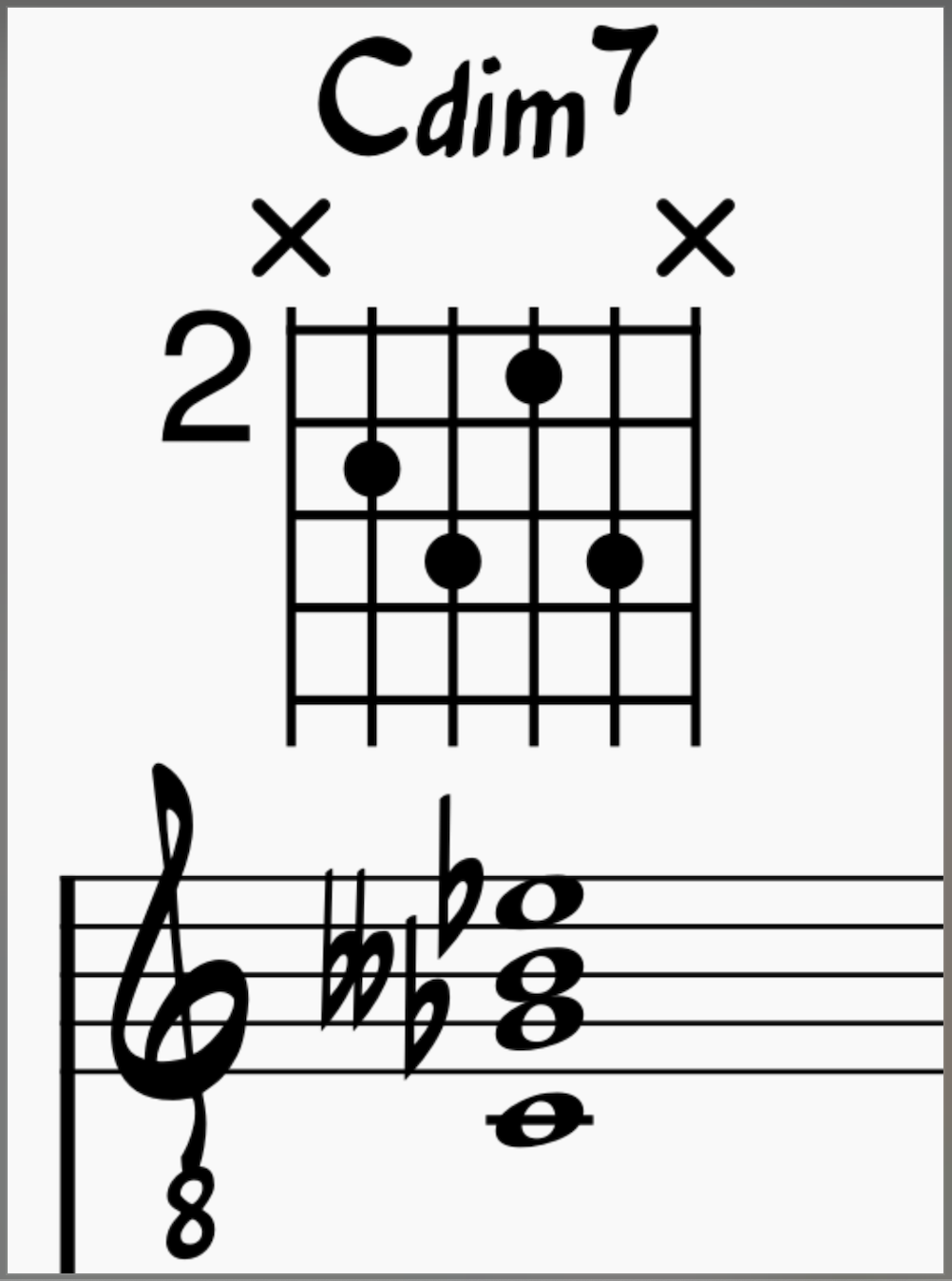
Here is a Cdim7 chord on Piano:

Diminished seventh chord symbols
You’ll see diminished chords written as Cdim or C°.
Less Common Seventh Chord Qualities
The seventh chords listed above are the five most commonly encountered seventh chord qualities in jazz music, but jazz composers and improvers use plenty of other variations. Before we dig into the world of chord extensions, let’s quickly explore three less commonly used seventh chords.
Minor(Maj7) Chords
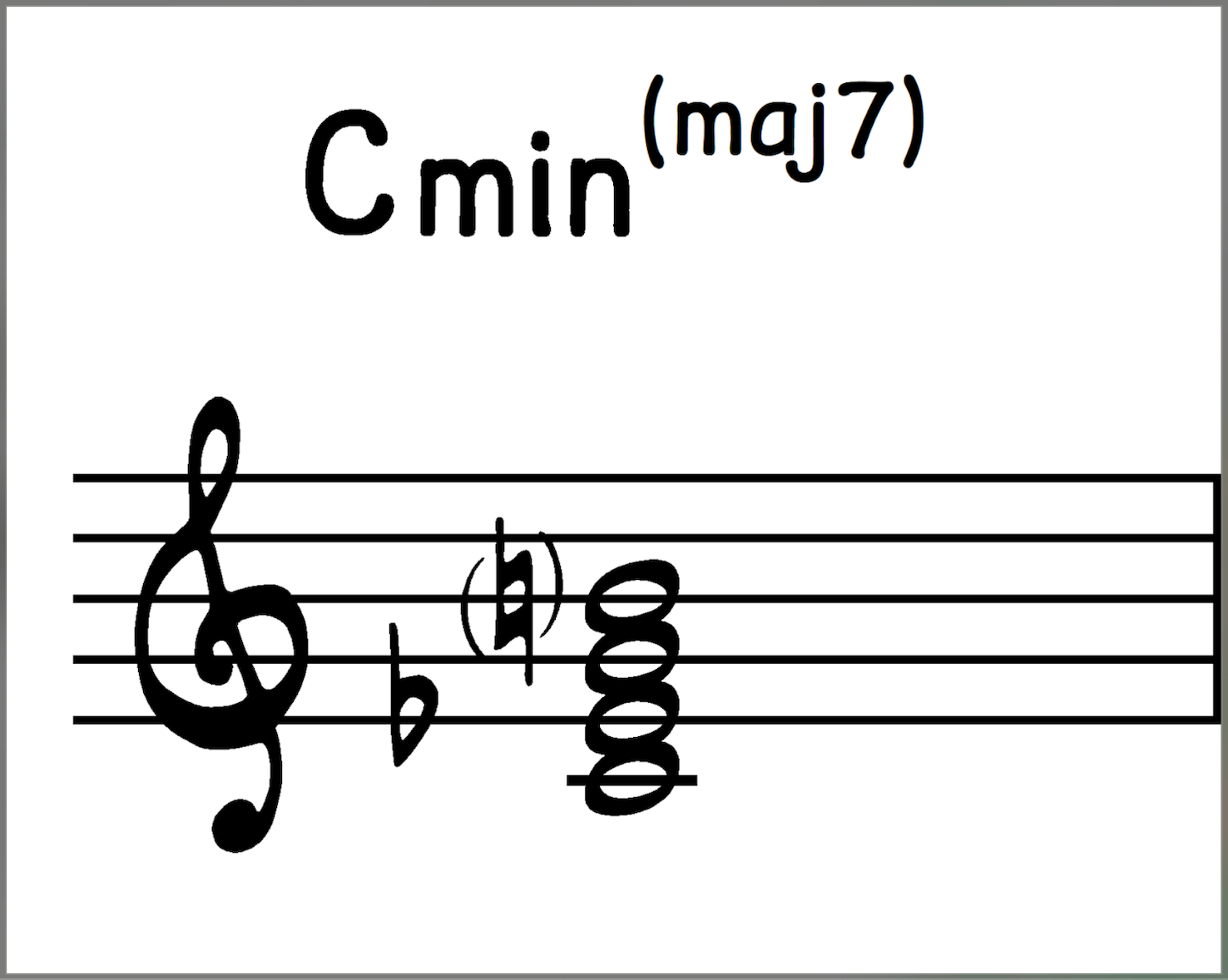
The minor major seventh chord is built by taking a minor triad and adding a major seventh interval from the root note or a major 3rd interval from the 5th.
- Rt. (C) or (1)
- Minor 3rd (Eb) or (b3)
- Perfect 5th (G) or (5)
- Major 7th (B) or (7)
You’ll often find minor chords with a major seventh in tunes that use a compositional device called the “wandering 7th.”

The jazz standard Blue Skies by Irving Berlin used this type of compositional device where the minor chord starts with a basic minor triad, and the next chord is a minor(maj7) chord, then a regular minor seventh chord, and finally a minor 6th chord.
One of the voices in the chord moves downward chromatically and sometimes wanders back up—that’s where we get the name “wandering 7th.” You should try composing using this technique!
This chord is non diatonic. Though it can’t be built from the major scale, it can be built from some of the more flavorful minor scales—the harmonic minor and the melodic minor scales.
Here is a C-(maj7) chord voicing on Guitar:
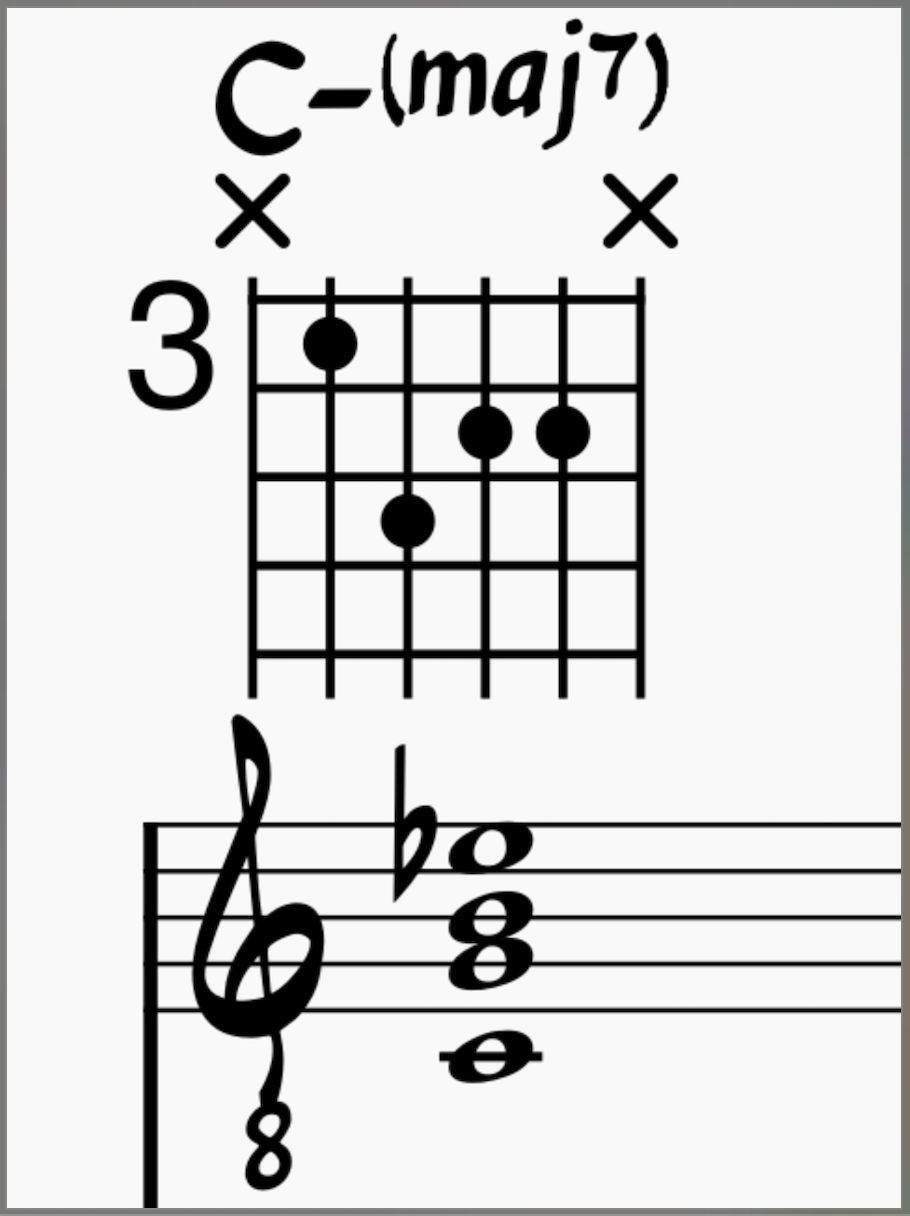
Here is a C-(maj7) chord on Piano:

Augmented Major 7 Chords
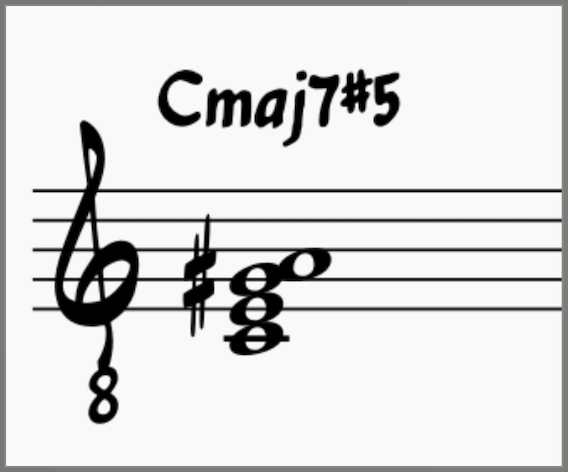
The augmented-major seventh chord is an augmented triad (major triad with a sharp 5th) and a major 7th. You can also think of it as a major 7th chord that has a sharp 5th, so it would be spelled [C-E-G#-B] instead of [C-E-G-B].
- Root note (C) or (1)
- Major 3rd (E) or (3)
- Augmented 5th (G#) or (#5)
- Major 7th (B) or (7)
This chord is unique and, when used appropriately, adds a beautiful and mysterious quality to music. Check out Wayne Shorter’s tune, Iris, for a great example of this chord in action.
Here is a Cmaj7#5 voicing on Guitar:

Here is a Cmaj7#5 chord on Piano:

Dominant Sus4 Chords
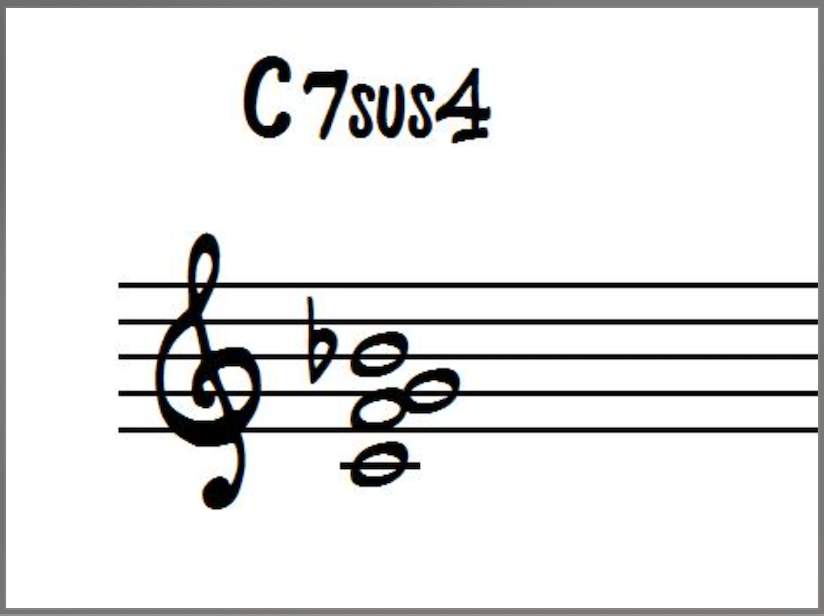
The dominant sus4 chord is a dominant chord that replaces the 3rd with the 4th. Instead of being spelled [R – 3 – 5 – b7], it gets spelled [R – 4 – 5 – b7]. This chord is ambiguous because its quality isn’t really a major chord or a minor chord—it’s somewhere else.
- Rt. (C) or (1)
- Perfect 4th (F) or (4)
- Perfect 5th (G) or (5)
- Minor 7th (Bb) or (b7)
Jazz composers use this chord to infuse their compositions with a floating sense of ambiguity. Fall, another Wayne Shorter tune, makes great use of this chord quality.
Here is a Dominant 7sus4 chord voicing on Guitar:
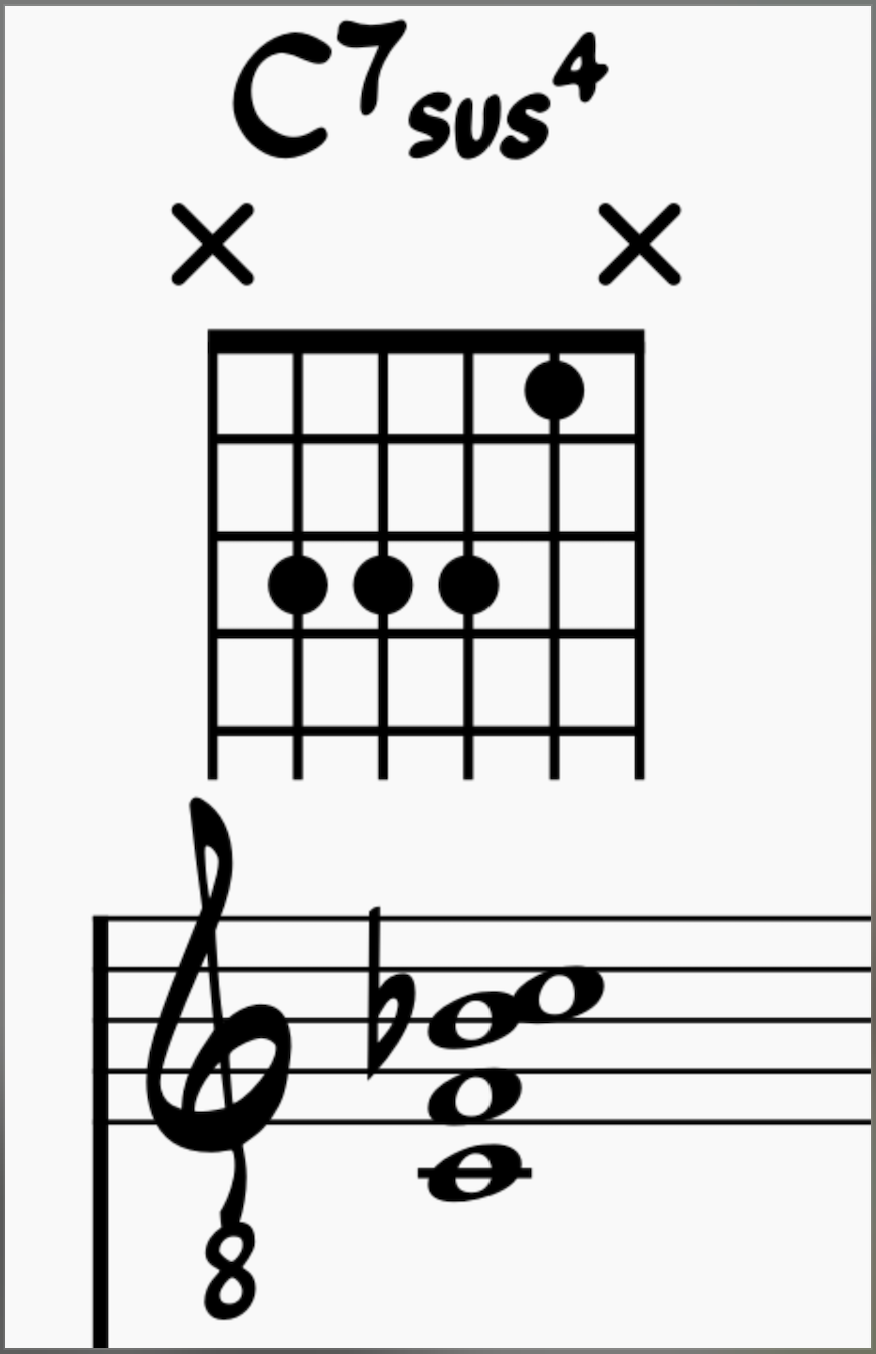
Here is a C7sus4 chord on Piano:

Want To Master Seventh Chords and Improve Your Knowledge of Jazz Harmony?
When you join the Inner Circle, you join a small circle of like-minded, motivated jazz musicians taking the right steps to improve their jazz playing and knowledge.
If you feel stuck and can’t seem to break through to that next level, check out the resources offered in the Inner Circle.
You’ll get access to—
- Monthly jazz standard studies to help you learn and improvise over jazz standards
- In-depth courses, practice programs, and personalized plans to help you improve quickly
- Instrument Accelerator courses to help you master your instrument.
- A diverse community of musicians who love jazz like you do.
Improve in 30 days or less. Join the Inner Circle.


